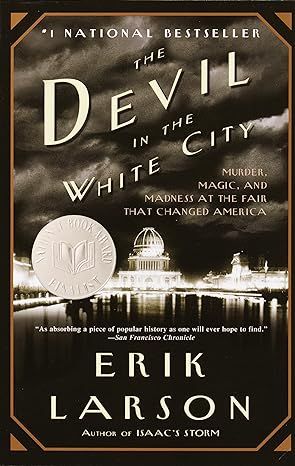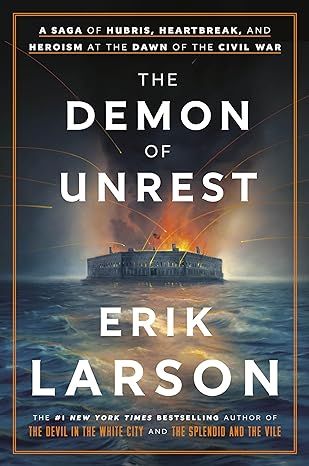The Devil in the White City: Murder, Magic, and Madness at the Fair That Changed America
4.3
-
27,401 ratings
#1 NATIONAL BESTSELLER • NATIONAL BOOK AWARD FINALIST • From the #1 New York Times bestselling author of The Splendid and the Vile comes the true tale of the 1893 World's Fair in Chicago and the cunning serial killer who used the magic and majesty of the fair to lure his victims to their death.
“As absorbing a piece of popular history as one will ever hope to find.” —San Francisco Chronicle
Combining meticulous research with nail-biting storytelling, Erik Larson has crafted a narrative with all the wonder of newly discovered history and the thrills of the best fiction.
Two men, each handsome and unusually adept at his chosen work, embodied an element of the great dynamic that characterized America’s rush toward the twentieth century. The architect was Daniel Hudson Burnham, the fair’s brilliant director of works and the builder of many of the country’s most important structures, including the Flatiron Building in New York and Union Station in Washington, D.C. The murderer was Henry H. Holmes, a young doctor who, in a malign parody of the White City, built his “World’s Fair Hotel” just west of the fairgrounds—a torture palace complete with dissection table, gas chamber, and 3,000-degree crematorium.
Burnham overcame tremendous obstacles and tragedies as he organized the talents of Frederick Law Olmsted, Charles McKim, Louis Sullivan, and others to transform swampy Jackson Park into the White City, while Holmes used the attraction of the great fair and his own satanic charms to lure scores of young women to their deaths. What makes the story all the more chilling is that Holmes really lived, walking the grounds of that dream city by the lake.
The Devil in the White City draws the reader into the enchantment of the Guilded Age, made all the more appealing by a supporting cast of real-life characters, including Buffalo Bill, Theodore Dreiser, Susan B. Anthony, Thomas Edison, Archduke Francis Ferdinand, and others. Erik Larson’s gifts as a storyteller are magnificently displayed in this rich narrative of the master builder, the killer, and the great fair that obsessed them both.
Kindle
$13.99
Available instantly
Audiobook
$0.00
with membership trial
Hardcover
$16.99
Paperback
$15.25
Ships from
Amazon.com
Payment
Secure transaction
ISBN-10
0375725601
ISBN-13
978-0375725609
Print length
447 pages
Language
English
Publisher
Knopf Doubleday Publishing Group
Publication date
February 09, 2004
Dimensions
5.16 x 0.99 x 7.94 inches
Item weight
14.8 ounces
Popular Highlights in this book
Make no little plans; they have no magic to stir men’s blood.
Highlighted by 7,398 Kindle readers
The exposition went with Westinghouse, and helped change the history of electricity.
Highlighted by 3,920 Kindle readers
In the first six months of 1892 the city experienced nearly eight hundred violent deaths. Four a day.
Highlighted by 3,154 Kindle readers
Product details
ASIN :
B000FC0ZIA
File size :
15855 KB
Text-to-speech :
Enabled
Screen reader :
Supported
Enhanced typesetting :
Enabled
X-Ray :
Enabled
Word wise :
Enabled
Award Winners:
Editorial Reviews
“Engrossing . . . exceedingly well documented . . . utterly fascinating.” —Chicago Tribune
“A dynamic, enveloping book. . . . Relentlessly fuses history and entertainment to give this nonfiction book the dramatic effect of a novel. . . . It doesn’t hurt that this truth is stranger than fiction.” —The New York Times
"So good, you find yourself asking how you could not know this already." —Esquire
“Another successful exploration of American history. . . . Larson skillfully balances the grisly details with the far-reaching implications of the World’s Fair.” —USA Today
“As absorbing a piece of popular history as one will ever hope to find.” —San Francisco Chronicle
“Paint[s] a dazzling picture of the Gilded Age and prefigure[s] the American century to come.” —Entertainment Weekly
“A wonderfully unexpected book. . . Larson is a historian . . . with a novelist’s soul.” —Chicago Sun-Times
Sample
The Black City
How easy it was to disappear:
A thousand trains a day entered or left Chicago. Many of these trains brought single young women who had never even seen a city but now hoped to make one of the biggest and toughest their home. Jane Addams, the urban reformer who founded Chicago's Hull House, wrote, "Never before in civilization have such numbers of young girls been suddenly released from the protection of the home and permitted to walk unattended upon the city streets and to work under alien roofs." The women sought work as typewriters, stenographers, seamstresses, and weavers. The men who hired them were for the most part moral citizens intent on efficiency and profit. But not always. On March 30, 1890, an officer of the First National Bank placed a warning in the help-wanted section of the Chicago Tribune, to inform female stenographers of "our growing conviction that no thoroughly honorable business-man who is this side of dotage ever advertises for a lady stenographer who is a blonde, is good-looking, is quite alone in the city, or will transmit her photograph. All such advertisements upon their face bear the marks of vulgarity, nor do we regard it safe for any lady to answer such unseemly utterances."
The women walked to work on streets that angled past bars, gambling houses, and bordellos. Vice thrived, with official indulgence. "The parlors and bedrooms in which honest folk lived were (as now) rather dull places," wrote Ben Hecht, late in his life, trying to explain this persistent trait of old Chicago. "It was pleasant, in a way, to know that outside their windows, the devil was still capering in a flare of brimstone." In an analogy that would prove all too apt, Max Weber likened the city to "a human being with his skin removed."
Anonymous death came early and often. Each of the thousand trains that entered and left the city did so at grade level. You could step from a curb and be killed by the Chicago Limited. Every day on average two people were destroyed at the city's rail crossings. Their injuries were grotesque. Pedestrians retrieved severed heads. There were other hazards. Streetcars fell from drawbridges. Horses bolted and dragged carriages into crowds. Fires took a dozen lives a day. In describing the fire dead, the term the newspapers most liked to use was "roasted." There was diphtheria, typhus, cholera, influenza. And there was murder. In the time of the fair the rate at which men and women killed each other rose sharply throughout the nation but especially in Chicago, where police found themselves without the manpower or expertise to manage the volume. In the first six months of 1892 the city experienced nearly eight hundred homicides. Four a day. Most were prosaic, arising from robbery, argument, or sexual jealousy. Men shot women, women shot men, and children shot each other by accident. But all this could be understood. Nothing like the Whitechapel killings had occurred. Jack the Ripper's five-murder spree in 1888 had defied explanation and captivated readers throughout America, who believed such a thing could not happen in their own hometowns.
But things were changing. Everywhere one looked the boundary between the moral and the wicked seemed to be degrading. Elizabeth Cady Stanton argued in favor of divorce. Clarence Darrow advocated free love. A young woman named Borden killed her parents.
And in Chicago a young handsome doctor stepped from a train, his surgical valise in hand. He entered a world of clamor, smoke, and steam, refulgent with the scents of murdered cattle and pigs. He found it to his liking.
The letters came later, from the Cigrands, Williamses, Smythes, and untold others, addressed to that strange gloomy castle at Sixty-third and Wallace, pleading for the whereabouts of daughters and daughters' children.
It was so easy to disappear, so easy to deny knowledge, so very easy in the smoke and din to mask that something dark had taken root.
This was Chicago, on the eve of the greatest fair in history.
Read more
About the authors
Erik Larson
Erik Larson is the author of six previous national bestsellers—The Splendid and the Vile, Dead Wake, In the Garden of Beasts, Thunderstruck, The Devil in the White City, and Isaac’s Storm—which have collectively sold more than twelve million copies. His books have been published in nearly forty countries.
Reviews
Customer reviews
4.3 out of 5
27,401 global ratings
California Dreaming
5
Inspired by "Blue Velvet"?
Reviewed in the United States on August 28, 2014
Verified Purchase
In the movie "Blue Velvet" by director David Lynch, you see a very nice 50s-style city with a small-town feel, where everyone knows everyone else and everyone gets along. Well, that's at the surface level, of course. Mr. Lynch shows what is really happening by taking his cameras and audience beneath the grass, giving a true close-up at the level of the earth and its bugs. You even get to see an ear, an ear that has been obviously cut off, which has now become food for worms. Or at least food for ants, with apologies to William Shakespeare and Hamlet. In other words: what you see on the surface is not really how things are; you have to get under-the-covers to find the dirty reality of it all.
And Erik Larson takes us on a very similar journey here with some very similar themes. You'll learn about the beautiful, classic architecture designed for the 1893 World's Fair in Chicago, ultimately called "The White City." You'll read that Nikola Tesla provided the power for those beautiful buildings, selling off his AC power patents to (I believe) General Electric. You'll almost feel water coming off the wonderful lake with its more wonderful birds, and the cooling effect that it all had on the fair-goers. But when you travel within just a few miles of that fair, you'll look under the covers and see the murders of H. H. Holmes. Well, you'll see at least some of those murders.
If I have any complaints about "Devil in the White City" (DITWC), it would be that not enough time is spent discussing Mr. Holmes and his crimes. One of my favorite chapters discusses how a Philadelphia detective took a multi-city tour, retracing Mr. Holmes' steps, in order to find the missing children of one of the killer's minions. The detective work was amazing, particularly due to the timeframe, and the fact that the detective actually found bodies was remarkable. Given any other detective, the children would have remained buried forever and so would have Mr. Holmes crimes. Even Mr. Holmes was surprised by the find, reading about it in the daily papers from his jail cell. Well, he could just cook up another set of lies to account for it, was what he was thinking. And did.
A while back I watched "The Gray Man," an underrated yet macabre film that I highly recommend, and the work by the detective who caught Albert Fish in similar fashion. It seems that while watching or reading either of these near masterpieces, you will believe that neither detective will ever get his man; the tasks seem impossible. But both did. With all of the forensics, DNA, and tools at detectives' disposal today, it seems that some of the old-school detectives were so much better. They truly put in the leg work to get the job done.
If you're a David Lynch fan, or a fan of architecture in general, this book is certainly for you. If you're into true crime? Sure, still a recommendation, but even though I'm going five, mostly due to tremendous research and even better writing -- one could argue the author's storytelling skills are unmatched -- I still would have preferred to read a little more about one H. H. Holmes myself. Then, peoples' true natures might have been better revealed, under the covers of The White City that soon would turn Black.
Read more
4 people found this helpful
Bruce Loveitt
5
A Beautifully Constructed Patchwork
Reviewed in the United States on March 3, 2003
Verified Purchase
If you read "Isaac's Storm," you have some idea of Mr. Larson's writing ability. Still, that book did not prepare me for this experience. With "The Devil In The White City" the author has moved the bar up a notch. He has several major themes and a few minor ones and he succeeds in meshing everything together seamlessly. First, we have the story of the Chicago World's Fair of 1893. Mr. Larson gives us the background, explaining the competition between various American cities that lobbied Congress for the right to hold the fair. New York, Chicago, Washington D.C. and St. Louis all wanted the fair. (The pressure was on to outdo the Paris Exposition Universelle of 1889.) The "upper-crust" of Chicago was especially anxious to prove to New York City that Chicago was much more than a place where animals were slaughtered and butchered. They wanted to demonstrate that Chicago had "class" and culture. Once Chicago won the competition to hold the fair, the race was on to design something spectacular and to get it built by the deadline that had been set. Mr. Larson introduces us to Daniel Burnham, the fair's director of works, and brings us into the offices of Burnham and the other architects and details the difficulties involved in getting such a diverse group of people, some with very large egos, to cooperate with one another. The author provides crisp character studies of Burnham, his partner John Root, Louis Sullivan and other famous architects, as well as Frederick Law Olmsted, who was eventually convinced to come on-board, despite being around 70 years old, to do the landscape architecture. Mr. Larson explains the physical details of putting the fair together and the bureaucratic jungle that Burnham had to hack his way through in order to accomplish his goal. The author tells us about some of the products that were introduced or popularized at the fair, such as Juicy Fruit gum, Cracker Jack, Aunt Jemima's pancake mix and Shredded Wheat ("shredded doormat, some called it). One of the many things Burnham had to worry about was to come up with something to "out-Eiffel, Eiffel" as Gustave Eiffel's tower had amazed the world when it was "unveiled" in Paris in 1889. Mr. Larson has a lot of fun with some of the crackpot ideas that were suggested to Burnham....one of which was to build a complex set of towers-within-towers, which could be telescoped to expand and contract at will. The inventor suggested putting a restaurant at the top but, Mr. Larson writes, "... possibly a bordello would have been more apt." As you can see, the story of the fair could easily have been a subject for an entire book, but Mr. Larson chose to also tell the story of Henry Holmes, the charming serial killer who operated just outside the confines of the fair. Details of his background are provided, and we are brought deep into his hellish world and are shown how he enchanted, killed and disposed of his victims...who were usually young women, but also included small children. Holmes had big, blue eyes and when talking to women he would always maintain eye contact and appear to be fascinated by what they were telling him. He would establish intimacy by touching them on the arm. But he also had a personality that could win over men, as well as women. He was cultured and soft-spoken and never lost his temper, even when under extreme pressure. He was a gifted liar. In addition to his "skills" as a killer, he was able to buy things without paying for them....managing to put creditors off for months and years because they not only believed his lies, but also just couldn't help liking him. Again, Mr. Larson manages to flesh out this portion of the book by bringing some of Holmes's victims to life for us...they are more than just caricatures. The author did a lot of legwork and dug deeply into the primary sources. Extracts from numerous personal letters are provided and people who were later interviewed by newspaper reporters and detectives are quoted. This brings such an intensity to the book that we are happy to have the story of the fair in counterpoint. We are allowed to "come up for air" in alternating chapters. Too much of Holmes at one time would be too much to handle. Finally, if you read "Isaac's Storm" you know that Mr. Larson has a true storyteller's gift. His prose is richly descriptive. One of my favorite sections in the book is where Mr. Larson writes about a meeting of architects in an office building known as the Rookery: "As the light began to fade, the architects lit the library's gas jets, which hissed like mildly perturbed cats. From the street below, the top floor of the Rookery seemed aflame with the shifting light of the jets and the fire in the great hearth." I love the imagery, and the use of the word "mildly" is a great touch. With "The Devil In The White City" you get two great tales, written with beautiful attention to physical detail and with the subtle and nuanced psychological portraits usually found in really fine fiction.
Read more
65 people found this helpful
L. Barton
5
Extraordinary
Reviewed in the United States on May 18, 2024
Verified Purchase
Embarking on a nonfiction book often seems like a chore and I frequently put the book aside and return to fiction. Larson had me hooked from the start and the read was a pleasure. The gruesome presence of the serial killer could luridly dominate but Larson weaves a tale of history and achievement that is far more interesting. 130-odd years after the Chicago World’s Fair, Larson vividly portrays the challenges and the triumphs and the innovative and colorful characters who brought the exposition to life despite ridiculous setbacks. There was a sense of purpose and community that is sorely lacking in projects in the 21st century. Many inventions and innovations from this fair still color our world.
Read more

Bruce Kendall
4
An Entertaining and Informative Read
Reviewed in the United States on April 27, 2004
Verified Purchase
Erik Larson does a bang-up job of conveying what life must have been like in the "Second City" as the 19th century drew to its fitful conclusion. Bristling at the constant reminder of New York City's superiority in so many areas, Chicago's city fathers rallied the troops and went all out in proving to New Yorkers, to the nation and to the world that Chicago was equal to the great challenge of mounting a World Exposition of truly monumental stature. Larson's descriptions of the Herculean effort put forth by numerous architects, builders, politicians, etc. lead the reader to a true appreciation of these "can do," spirited individuals. Yet beneath the teeming activity and a short distance away from the gleaming white Pleasure Palaces of the Fair, there stood a building of a different sort entirely, inhabited by one of the most vicious, truly evil creatures the young nation ever produced. Larson does an adequate, but not great job of telling the darker story surrounding H H Holmes, the mesmeric Svengali whose brilliant blue eyes and engaging charm seduced at least a score (one estimate was up to 200, which the author disputes) unfortunate women. Unlike Jack the Ripper, to whom he was later likened, he didn't limit himself to female victims. Business partners who had outworn their usefulness and several children were amongst his prey, as well. He just had a penchant for murder. The sections on the construction of the Columbia Exposition are filled with fascinating anecdotes, ranging from the origins of the sobriquet "windy city (derisively coined by Charles Anderson Dana, Editor of The New York Sun)" to the dramatic entrance of Annie Oakley, barreling in on horseback and blazing away with her two six-shooters in Buffalo Bill Cody's Western Show adjacent to the Fair Grounds. Larson also provides an interesting side story surrounding Patrick Predergast, a delusional political aspirant who turns assassin. He paints a compelling portrait of Fredrick Law Olmstead, American History's premier landscape architect who took up the almost impossible task of designing and overseeing the Exposition's parks and lagoons. The hero of the book, however, is Daniel Hudson Burnham, who was ultimately responsible for the lion's share of the planning, construction and smooth running of the entire enterprise. He had a little over two years from the time Congress selected Chicago from a list of candidate cities that included Saint Louis and New York, to the day of the Expo's official opening. That he got the job done within the alloted time is one of the great marvels in an age of marvels, especially given the myriad difficulties which he and his crew had to overcome. The Holmes narractive appears a bit lackluster in comparison to the story of the Fair's construction. Larson acknowledges the difficulty he faced in recreating Holmes' vicious crimes via imaginary vignettes. He states in an afterword that he went back and read Capote's IN COLD BLOOD for the technique in which Capote so brilliantly engaged in his imaginative reconstruction of events. The only problem with this approach is that Capote had access to and the confidence of the two killers that are at the center of IN COLD BLOOD. Larson had only newspaper accounts from the period as well as a very unreliable journal that Holmes wrote after he was tried and sentenced to death (he was hanged several months after the trial). It would appear that Larson goes a bit too far out of his way to avoid the lurid and sensationalitic aspects of Holmes' killing spree. One has only to visit some of the numerous web sites devoted to Holmes to see that Larson is particularly reticent to discuss Holmes' sexual deviance. This is understandable, as Larson wants to be taken seriously as an historian, yet the facts are out there (most of them well documented) so it wouldn't have hurt to have included a bit more of the darker details. The book could also have used more illustrations. The Chicago Tribune, at the time the story first broke in 1894, included a detailed floor plan of the "Chamber of Horrors" Holmes built on the corner of Sixty-Third and Wallace in the Englewood section of Chicago. That illustration would have given the reader a better sense of the bizarre layout of the structure. More pictures of the Exposition would have also been helpful. Here again, there are several sites on the web devoted to the Columbia Exposition that have many pages of great photographs. The books virtues far outweigh its shortcomings and I have no problem in recommending THE DEVIL IN THE WHITE CITY to anyone interested in US History, Chicago Architecture, or just a well told story. BEK
Read more
731 people found this helpful
maestrokenneth
3
Going against the grain.. This isn't 5*!! It's lengthy, mundane, incomplete, with a few good qualities that carry it to the end.
Reviewed in the United States on October 11, 2015
Verified Purchase
I could not wait to write a review of this book. I had bought this book for a friend, she gave it back to me since she had already read it, and she said she thought the book was pretty dry. That's being nice. Here is my impression after having just completed it.
The DIWC took me about 2 months to read. I understand many people think this one of the greatest books ever written and that it is a page turner. This is stunning. If this book is really so grand, why was it always very difficult for me to pick up the book and continue reading it. There were times I picked up the book, read two pages, then threw it down in disgust. Ironically, when I started it, I too felt it would read like a real page turner. That ended fast.
When I finished the book, I just set it aside with great relief. I just didn't care anymore and I was over it. And I was eager to write my review so I had motivation to finish. I have a policy to always finish the books I start. The story is about the Chicago World's Fair of 1891. At the same time one of the greatest mass murderers in America was secretly killing people in Chicago. The book has these two parallel stories going in alternating chapters. The stories are not related and don't intersect anywhere, except Holmes and some victims do attend the fair.
Although I understand what the author is trying to do here: portray the lightness and darkness of America at the time, an important time in history. But it doesn't come together well. Some reviewers online say they read only the most interesting chapters and skipped the rest. This is the textbook approach to reading. Is this what the author intended?
I am giving this book 2 stars. The DIWC is useful for history classes and English classes. Other than that, it's not the best choice for reading for enjoyment. There is enough interesting material in the book to keep me reading. This saved it for me. The author researched a lot to create the book. He deserves a lot of credit. This is for 2 stars, and not one.
Nonetheless I was just stunned. How could so much interesting material be presented and organized in such a boring way? The book is good for English class because the book is replete with literary devices and rich vocabulary. There is lots of foreshadowing, metaphors, and similes. But in this case, all this does not make the book better, it makes it more annoying because it's all very much in your face, and not subtle.
I became so tired of some of the authors over the top, embellished descriptions. Read on I couldn't resist sharing. Here are some of the most memorable examples: "Cairns of frozen manure punctuated the landscape." Gee, why not just say: "Piles of horse manure covered the ground." "The light entering the room was preternaturally intense, carrying with it the surplus radiance of the lake and its frozen shore." What's wrong with saying, "Bright winter sunlight reflected off the lake and frozen shore and illuminated the room." Here's another, "Bertha Palmer, whose diamonds radiated an almost palpable heat." Instead, just say Bertha wore "glittering diamonds." And another: "Voices drifted across the water, laced now and then with the laughter that rang like crystal touched in a toast." How could such a simple thought be so overwritten? "It was hot in Indianapolis. Leaves hung in the stillness like the hands of the newly dead." That was uncalled for.
When I read lines like those above, I don't ooh and aah over how good the writing is, I groan and roll my eyes. He is trying so hard to impress us. There are lines like this on most pages and it is annoying.
The DWIC is weighted down with so many mundane details that don't add very much to the whole. We get to read about what's on the menu at dinner, how many ducks vs swans should be in a pond, and whether they should plant roses, chrysanthemums, or petunias in the garden, and what each flower represents. And it goes on and on and on.
But at the same time, many details feel missing. We are constantly reading about the delays and cost overruns facing the fair's construction. Then within a few pages, we read that the fair is now half way completed. This is also a book of lists: food on the dinner menu, lists of Holmes' wives and victims and children, lists of plants, lists of architects, lists of Chicago city officials, lists of animals and plants, lists of visitors to the fair, and on and on.
These are my big gripes about this book. Toward the end it focuses more on Holmes. Here the book improves but only somewhat. I actually felt that reading about the architects and their ideas, thoughts, and approaches was also kind of interesting. I didn't mind that so much. It also reminded my somewhat of the Fountainhead (FH) by Ayn Rand. That book also deals with great architects and their visions just as does the DIWC. But Rand did so in a more effective way, put aside for a minute how one may feel about her politics. A few parts are so similar it almost made me think he borrowed from the FH by Ayn Rand. I find architecture interesting, so those parts did not bore me. Other reviewers were bored by this however. I get it. That's a problem, a lot here is boring, it's just boring in different ways for different folks.
I have mixed feelings about this book. It was educational but highly incomplete. For example, so much happens regarding Nicola Tesla and Thomas Edison and wiring the fair for electricity. But the book only just touches on this. A fascinating topic that glossed over.
Sorry this is so lengthy. This is such a celebrated writer and the DIWC is so well regarded. I had so much to say about this. I could keep going.
Read more
57 people found this helpful
Top Erik Larson titles
Best Sellers

The Great Alone: A Novel
4.6
-
152,447
$5.49
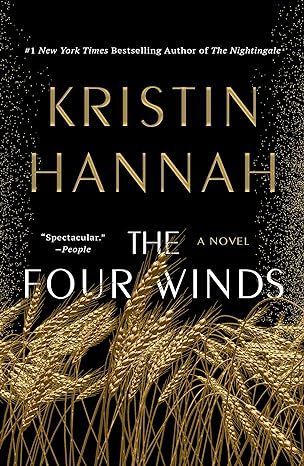
The Four Winds
4.6
-
156,242
$9.99
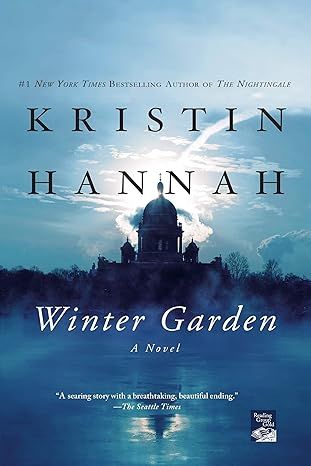
Winter Garden
4.6
-
72,838
$7.37
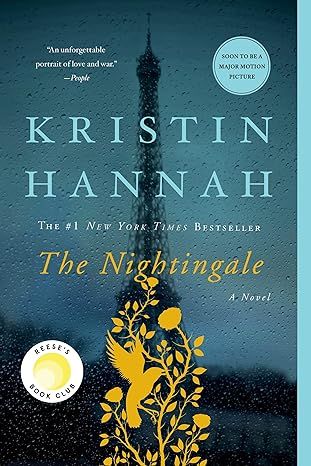
The Nightingale: A Novel
4.7
-
309,637
$8.61

Steve Jobs
4.7
-
24,596
$1.78
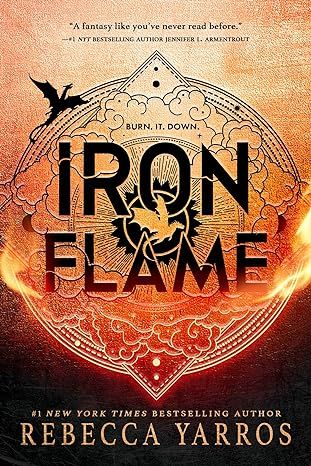
Iron Flame (The Empyrean, 2)
4.6
-
164,732
$14.99
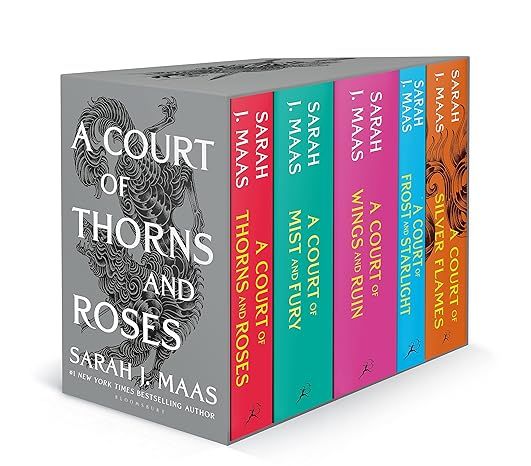
A Court of Thorns and Roses Paperback Box Set (5 books) (A Court of Thorns and Roses, 9)
4.8
-
26,559
$37.99
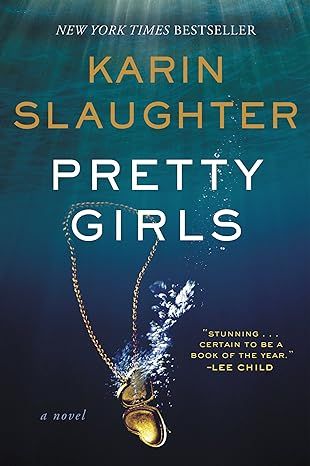
Pretty Girls: A Novel
4.3
-
88,539
$3.67
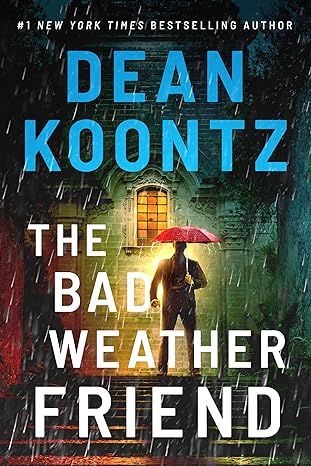
The Bad Weather Friend
4.1
-
34,750
$12.78

Pucking Around: A Why Choose Hockey Romance (Jacksonville Rays Hockey)
4.3
-
41,599
$14.84
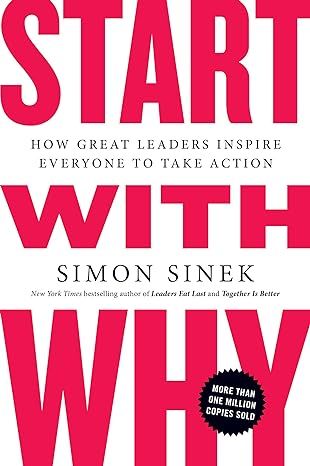
Start with Why: How Great Leaders Inspire Everyone to Take Action
4.6
-
37,152
$9.99
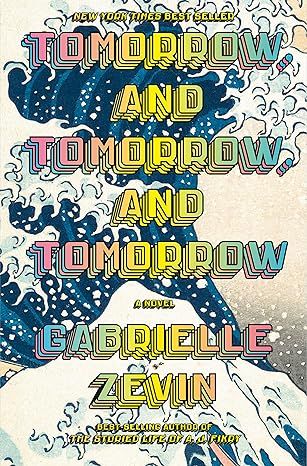
Tomorrow, and Tomorrow, and Tomorrow: A novel
4.4
-
95,875
$13.99
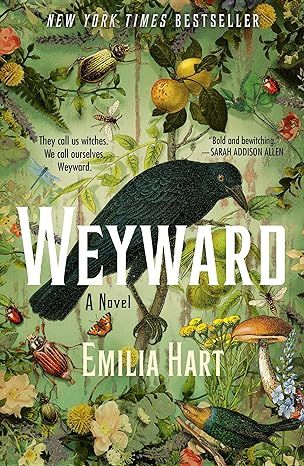
Weyward: A Novel
4.4
-
27,652
$11.99
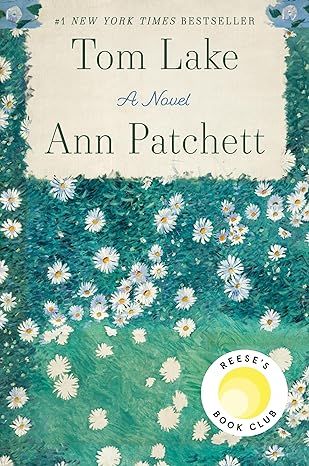
Tom Lake: A Reese's Book Club Pick
4.3
-
37,302
$15.74
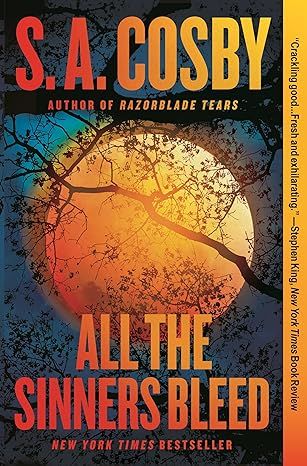
All the Sinners Bleed: A Novel
4.4
-
12,894
$13.55
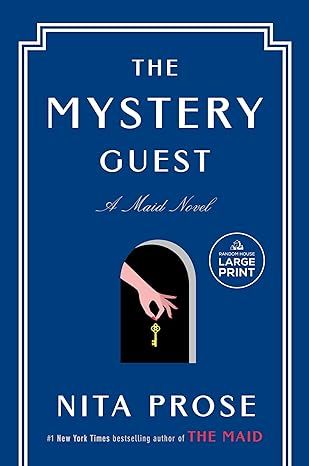
The Mystery Guest: A Maid Novel (Molly the Maid)
4.3
-
9,844
$14.99
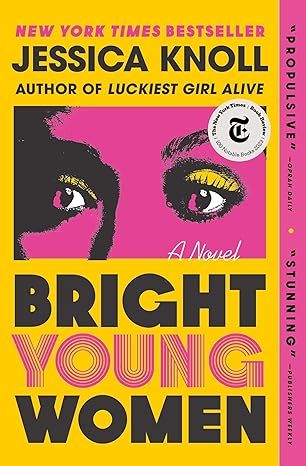
Bright Young Women: A Novel
4.2
-
8,485
$14.99
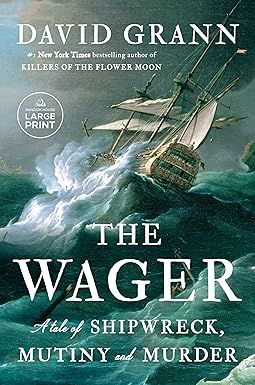
The Wager: A Tale of Shipwreck, Mutiny and Murder (Random House Large Print)
4.5
-
28,672
$14.99
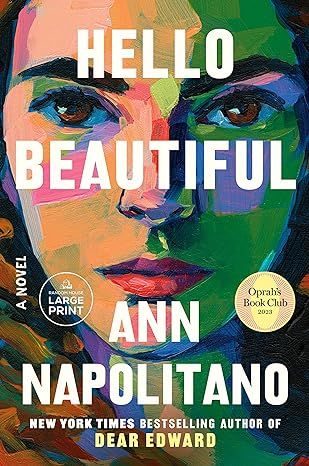
Hello Beautiful (Oprah's Book Club): A Novel (Random House Large Print)
4.4
-
79,390
$14.99
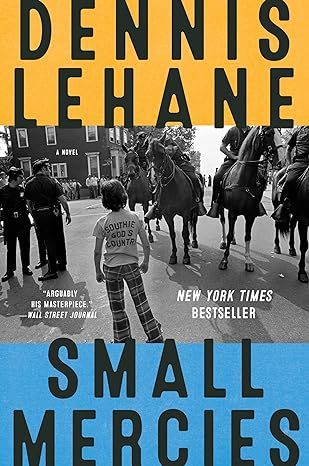
Small Mercies: A Detective Mystery
4.5
-
16,923
$10.00
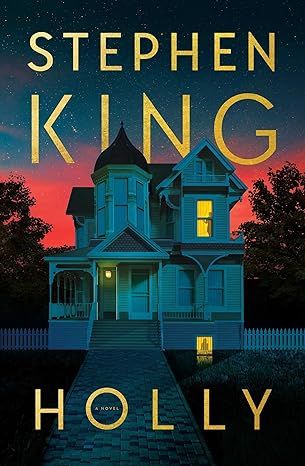
Holly
4.5
-
31,521
$14.99
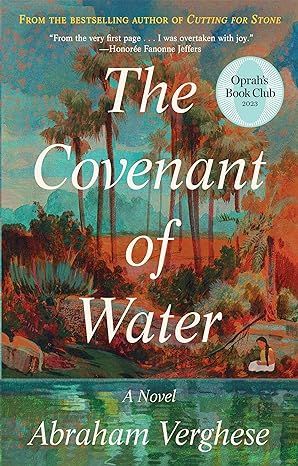
The Covenant of Water (Oprah's Book Club)
4.6
-
69,712
$9.24
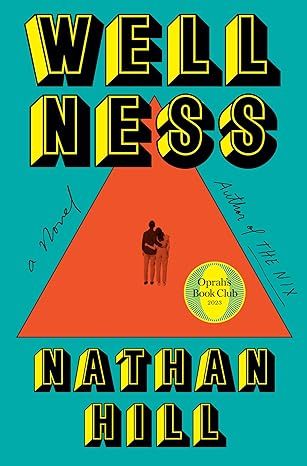
Wellness: A novel
4.1
-
3,708
$14.99
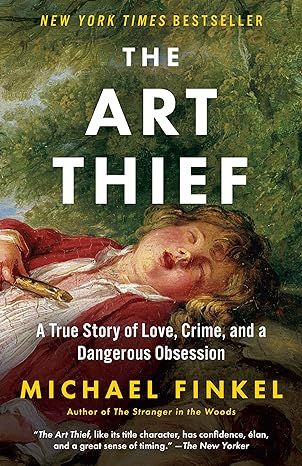
The Art Thief: A True Story of Love, Crime, and a Dangerous Obsession
4.3
-
4,805
$14.99
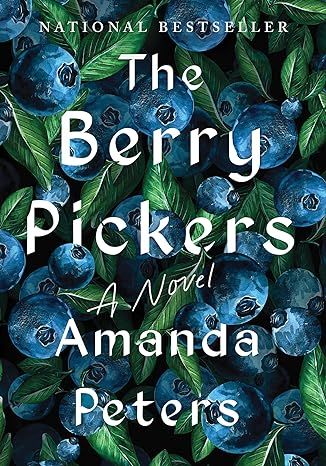
The Berry Pickers: A Novel
4.5
-
14,209
$14.99

Elon Musk
4.7
-
15,272
$16.99

Just for the Summer
4.6
-
19,524
$11.99
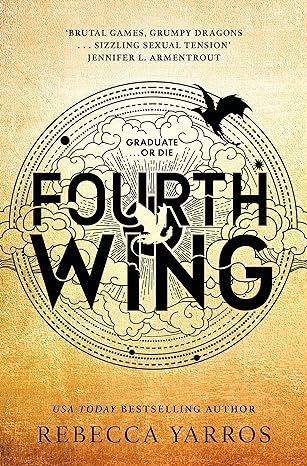
Fourth Wing (International Edition)
4.8
-
206,495
$7.95
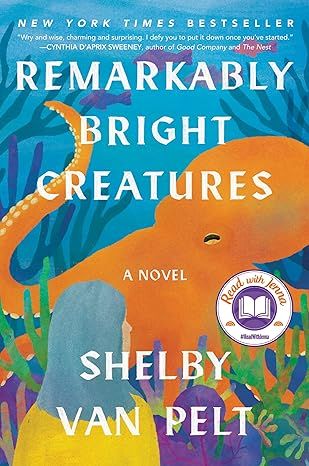
Remarkably Bright Creatures: A Read with Jenna Pick
4.6
-
65,556
$15.80

Tell Me Your Life Story, Mom: A Mother’s Guided Journal and Memory Keepsake Book (Tell Me Your Life Story® Series Books)
4.7
-
5,107
$11.24
